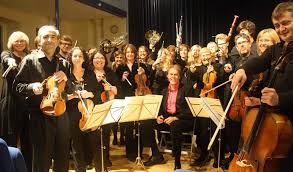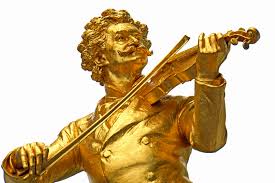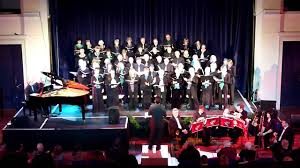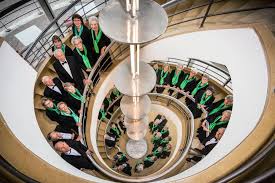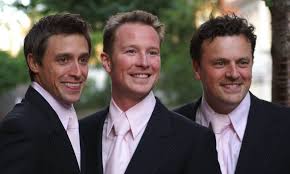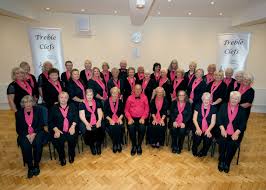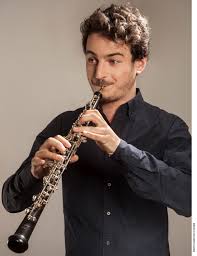Friday 24 & Saturday 25 December at Opus Theatre
Sunday 26 December at Kino teatr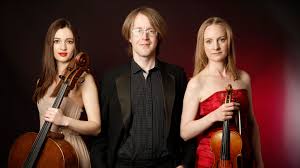
The first Hastings Early Music Festival brought a wealth of fine musicianship as well as encouraging an enthusiastic following for all three events across the weekend.
Friday night’s concert given by the Rautio Piano Trio may have lain just outside the normal parameters of early music but served as an engaging context for the rest of the weekend. Introducing the three piano trios by Mozart, Haydn and Beethoven, the members of the trio drew links based on letters from the composers, the visits they made to each other and their friendships across the years at the end of the eighteenth century.
They also drew our attention to the development of the Piano Trio itself, pointing up the growing importance of the cello, mellifluously played by Victoria Simonsen, as one moves from the near simplistic bass line from Mozart to the warm cantabile of Beethoven’s flowing melodies.
They opened with Mozart’s trio in C major KV548, the first Allegro driven by the piano. Though there is more scope for Jane Gordon’s solo violin as the work progresses it is essentially all built around Jan Rautio’s muscular piano playing.
The balance shifts in Haydn’s G major Trio Hob XV:25, the gently flowing legato line of the Poco Adagio particularly impressing and the jaunty, almost raunchy, Presto bringing the first half to a fine climax.
After the interval we heard Beethoven’s Eflat trio Op70No2. Here the balance was exemplary. If the acoustic in the Opus is on the dry side it helps to clarify and accentuate the sound, giving it an added immediacy. The final Allegro moved us securely into the romantic period, with its complexity both of texture and structure – we have come a very long way from the gentle simplicity of Mozart’s trio earlier in the evening. As a brief, romantic, encore we heard a delightful Nocturne by Ferdinand Hiller, who himself bridges the time between Haydn and Wagner.
We were now ready to dive back into the heady excesses of the eighteenth century on the following evening, opening with a brief Prelude to Act V of Purcell’s The Fairy Queen performed by the full HEMF Baroque Ensemble. This was followed by Winter from Vivaldi’s Four Seasons, and highlighting the Festival Director, Jane Gordon, as solo violinist. So familiar is the work that it is all too easy to ignore the fact that this is effectively a virtuoso concerto for violin, and one which she carried off with considerable aplomb and impressive ornamentation. The Largo was taken at a more rapid tempo than might be expected but reflected the bleakness of the setting, to say nothing of one of the coldest nights so far this winter.

Soprano Charlotte Beamont joined the ensemble to sing the gentle but plaintive O Let Me Weep from Purcell’s The Fairy Queen followed instantly by a jaunty chaconne with violin obbligato.
The first half ended with a return to Vivaldi and his familiar Nulla in Mundo- though on this occasion we heard the whole work including the excessive and wonderful coloratura of the final Alleluia.
After the interval we moved to Bach and Handel, opening with an arrangement of one of Bach’s orchestral suites for Flute and strings. Flautist Neil Mclaren played through the Overture and then gave us a brief introduction to his flute which is based on a 1730 German model and one which he bought without even playing, knowing how good it would be and how perfect for eighteenth-century scores. They then played the six dance movements which make up the rest of the suite with a very slow and introspective Sarabande and a sprightly concluding Badinerie which seemed to defy the B minor setting of the whole work.
Charlotte Beamont returned for three vocal items to conclude the evening. Lascia ch’io pianga was the popular aria from Handel’s Rinaldo followed by the even better known Rejoice Greatly from Messiah. In both the ornamentation was subtle and always apt.
The concert ended with the final aria from Bach’s Cantata BWV209, drawing on all the players across the evening for a warmly uplifting conclusion before we went out into a very cold night.
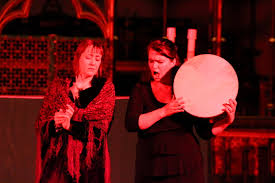
The final event of the Festival was held on Sunday afternoon at Kino Teatr where The Telling presented a programme of medieval carols, interspersed with readings. Where the previous two evenings had been carefully structured to lead us through and give us a deeper insight into the music we were to hear, the approach from the two singers and instrumentalist was immersive and at times somewhat confusing. With no translations or explanations, no matter how beautiful the singing, we had no idea what we were listening too or the potential differences between the settings. More confusing still were the readings. Where all the music was medieval, the first reading was Laurie Lee’s experience of singing carols at the Big House in Slad in the early part of the last century. Only the brief extract from Gawain came close the period of the music. Kaisa Pulkkinen’s harp playing was most enjoyable but it would have been even more fascinating to know why she used two very different portable harps. There was some familiar music along the way but it could have been so much more enjoyable if we had understood more, rather than simply sitting back and indulging ourselves.
Maybe this will be part of a learning curve for next year. As a first festival this has been immensely impressive and plans are already in hand for next year. Jane Gordon has to be thanked and congratulated – starting anything for scratch is difficult and getting this far so quickly shows a level of professionalism and stamina which should take her far.

